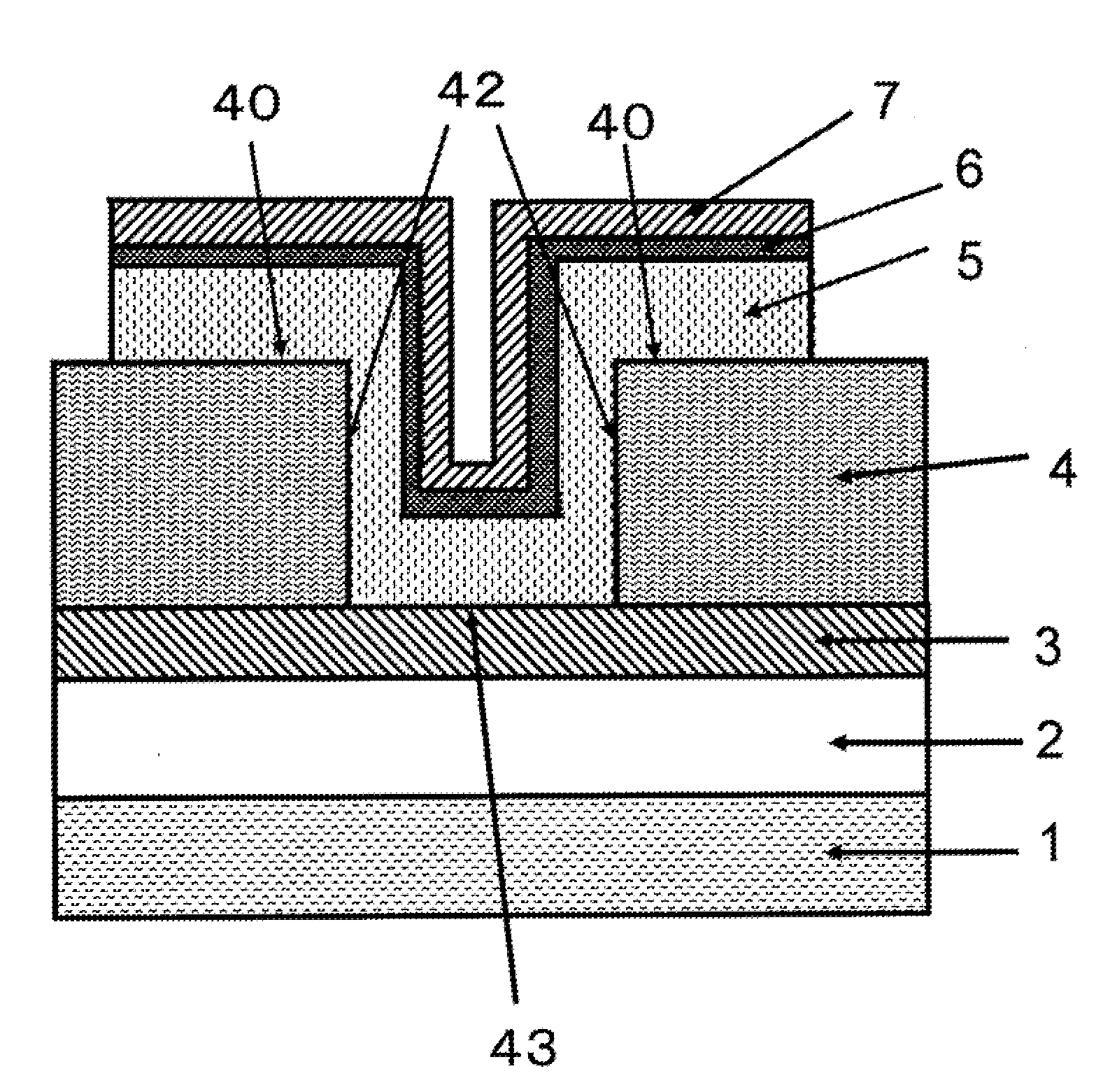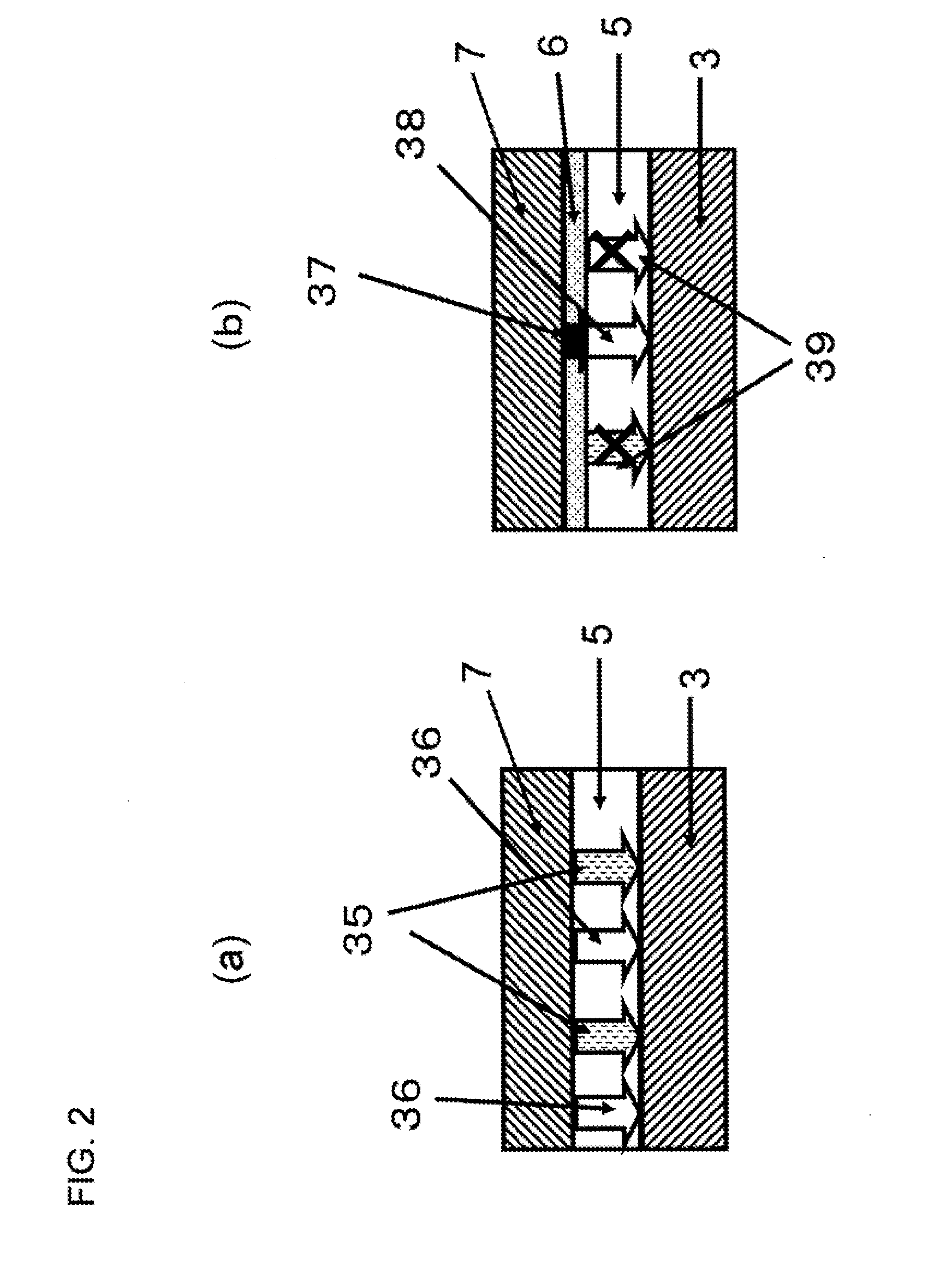Nonvolatile storage device
a storage device and non-volatile technology, applied in the direction of digital storage, semiconductor devices, instruments, etc., can solve the problems of unstable threshold voltage, disadvantageous variation of voltage threshold, leakage current, etc., to prevent the formation of new filaments, stabilize the holding resistance characteristics, and induce stable filaments.
- Summary
- Abstract
- Description
- Claims
- Application Information
AI Technical Summary
Benefits of technology
Problems solved by technology
Method used
Image
Examples
embodiment
[0072]FIGS. 6 to 9 are sectional views showing a process of producing a nonvolatile storage device according to the present invention. First, the silicon substrate 22 was prepared. The silicon oxide film 23 of film thickness 100 nm was then deposited on the silicon substrate 22 using the CVD method or the thermal oxidation method. Thereafter, the Ti layer 24, TiN layer 25, Ti layer 26 were deposited using the sputtering method. An Ru film of film thickness 100 nm was then deposited. Finally, the lower electrode 27 was formed (FIG. 6(a)).
[0073]Then, the silicon oxide film 28 of film thickness 200 nm was formed using the CVD method (FIG. 6(b)). A photo resist (not shown in the drawings) was deposited so as to cover the silicon oxide film 28. An opening was thereafter formed by photolithography and dry etching (FIG. 7(a)).
[0074]Then, the crystallized nickel oxide (resistance variation layer) 29 was deposited to a film thickness of 10 nm by the sputtering method (FIG. 7(b)). Here, the n...
PUM
 Login to View More
Login to View More Abstract
Description
Claims
Application Information
 Login to View More
Login to View More - R&D
- Intellectual Property
- Life Sciences
- Materials
- Tech Scout
- Unparalleled Data Quality
- Higher Quality Content
- 60% Fewer Hallucinations
Browse by: Latest US Patents, China's latest patents, Technical Efficacy Thesaurus, Application Domain, Technology Topic, Popular Technical Reports.
© 2025 PatSnap. All rights reserved.Legal|Privacy policy|Modern Slavery Act Transparency Statement|Sitemap|About US| Contact US: help@patsnap.com



